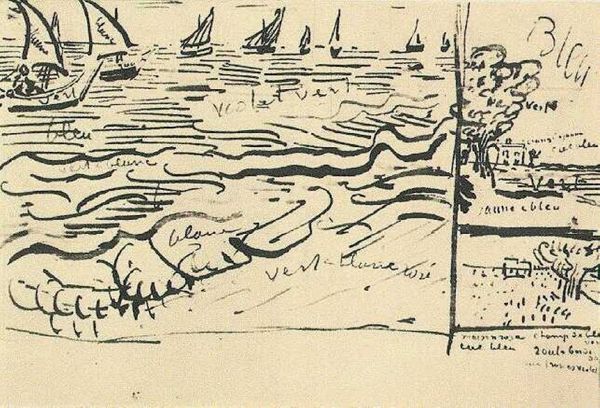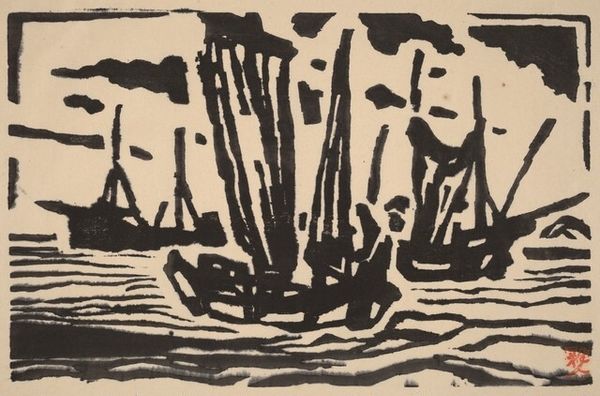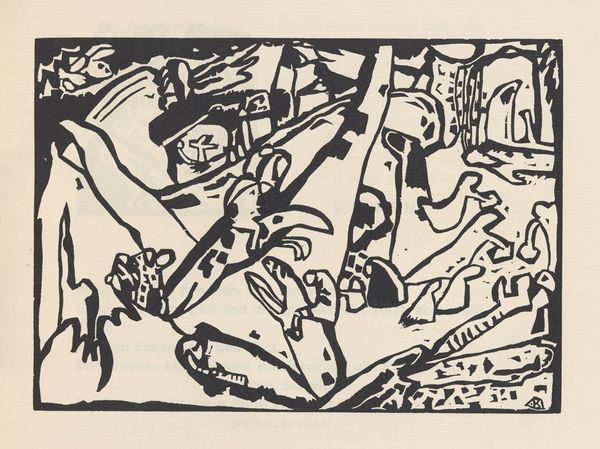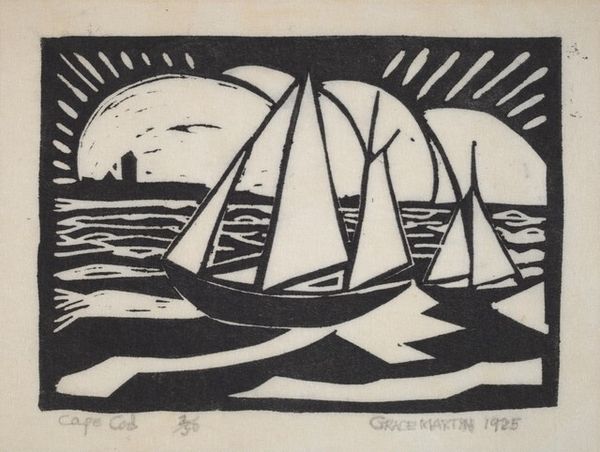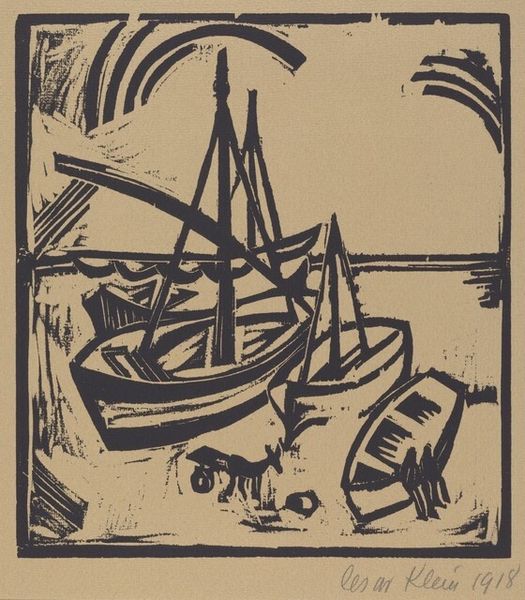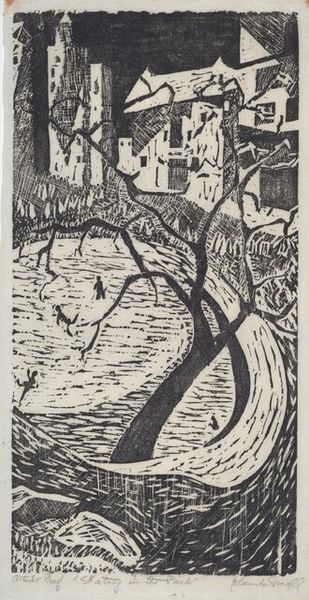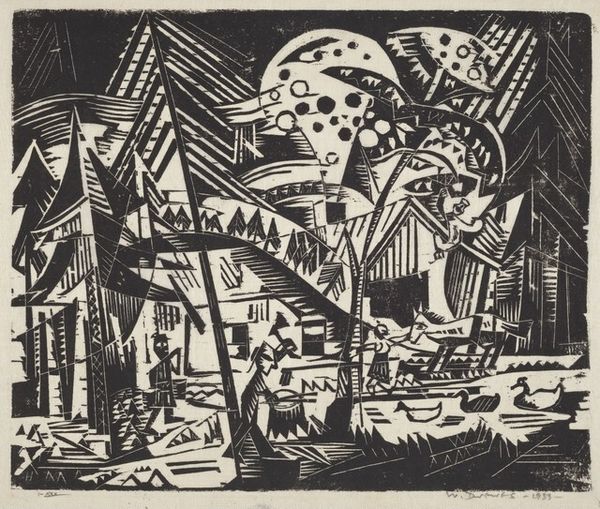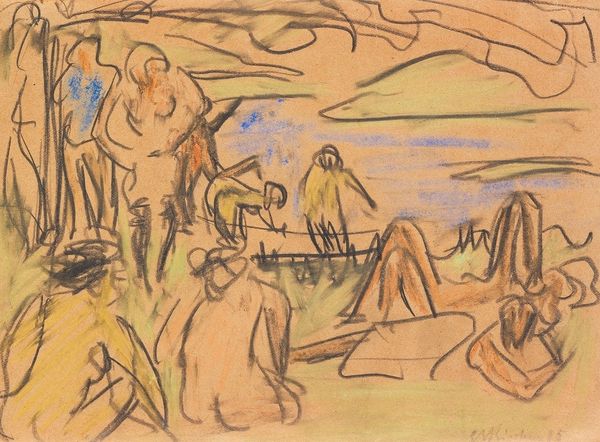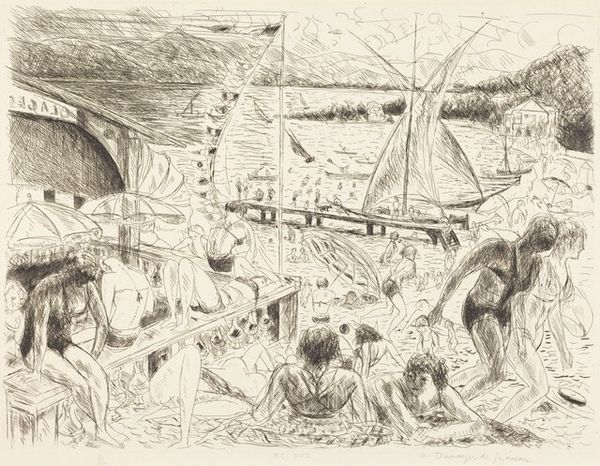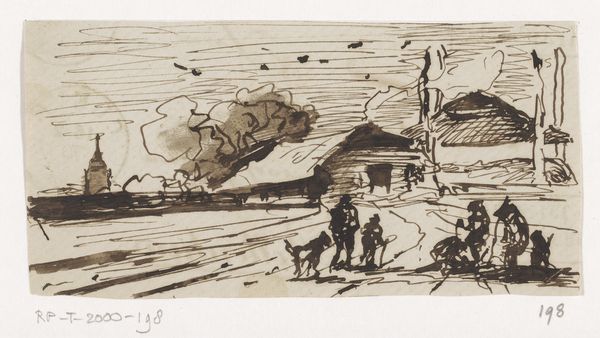
print, woodcut
# print
#
landscape
#
german-expressionism
#
figuration
#
expressionism
#
woodcut
Dimensions: plate: 29.7 × 36.6 cm (11 11/16 × 14 7/16 in.) sheet: 39 × 54.1 cm (15 3/8 × 21 5/16 in.)
Copyright: National Gallery of Art: CC0 1.0
Curator: This is Otto Lange's "On the Beach," a woodcut created in 1914. The stark contrast immediately grabs your attention, doesn't it? Editor: Absolutely. The density of those dark lines gives the entire scene a restless energy, like the wind itself is carving into the landscape. What's the social context here? Curator: Lange was associated with German Expressionism, a movement deeply concerned with capturing raw emotional states. He used his art to express a sense of unease, particularly during periods of societal change and upheaval like World War I. The subject, likely a port along the Baltic, speaks to a connection to nature but the figures seem burdened rather than at peace. Editor: I see it. Those figures are hunched over, almost swallowed by the landscape. It looks laborious. The rigid angularity of the boats, buildings, and even the foliage feels very deliberately oppressive. Are there influences besides expressionism present? Curator: Absolutely, there's a nod to the artistic conventions of German Expressionism, yes, especially within printmaking at the time. These artists felt entitled to political commentary in response to their cultural climate. The choice of a woodcut medium, harking back to earlier traditions of printmaking in Germany, adds to the gravity. This piece might resonate more than Lange intended. Editor: Definitely, its almost like the lack of color isolates the workers along the port further, creating even more dramatic form from only positive and negative space. You begin to question the working condition in which they might perform their labor in 1914. The figures feel more trapped because we're forced to visualize a dark setting rather than imagining their location in color. Curator: He's stripping away all embellishment to expose the fundamental relationship between humanity and the harshness of existence. It serves as a powerful commentary. Editor: A bleak, unflinching look. Considering when this piece was made, one could consider this a political or moral outcry. There are lots of possibilities for its interpretation. Curator: Precisely. The artwork doesn't offer solace. Editor: It presents a world stripped to its bones, leaving a lasting sting. Curator: And prompts consideration beyond just what meets the eye. Thank you for this.
Comments
No comments
Be the first to comment and join the conversation on the ultimate creative platform.

